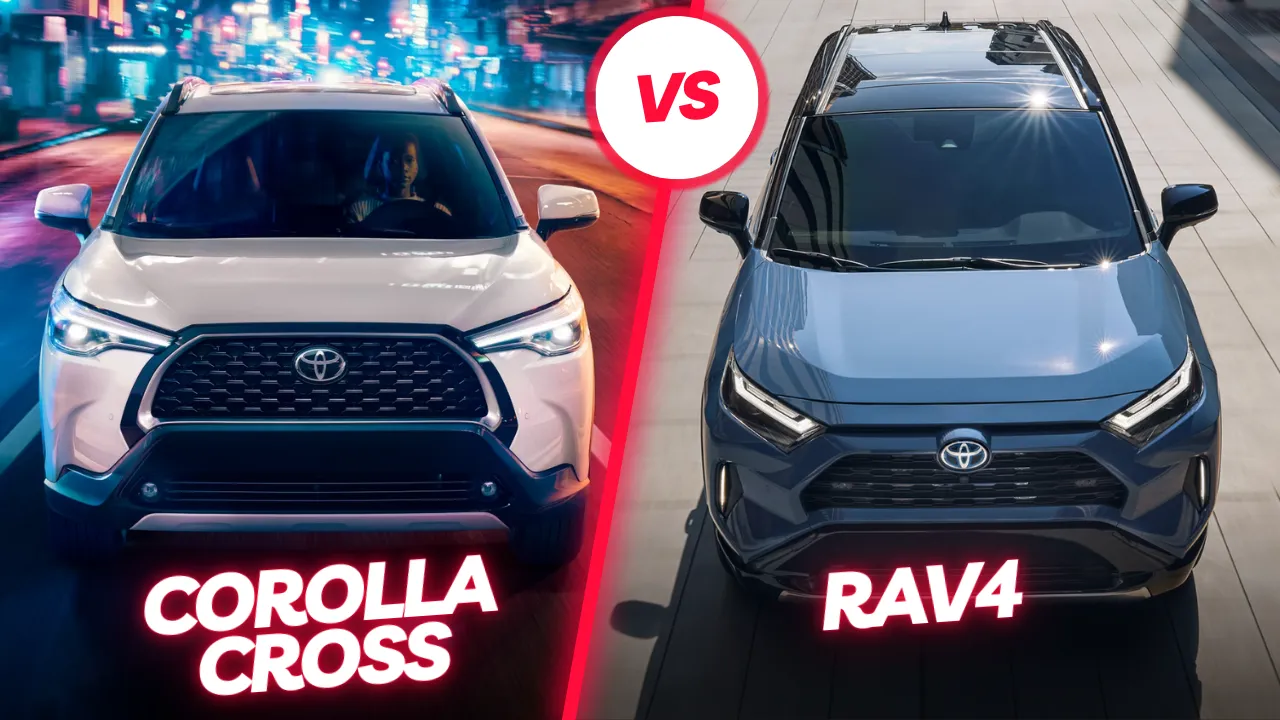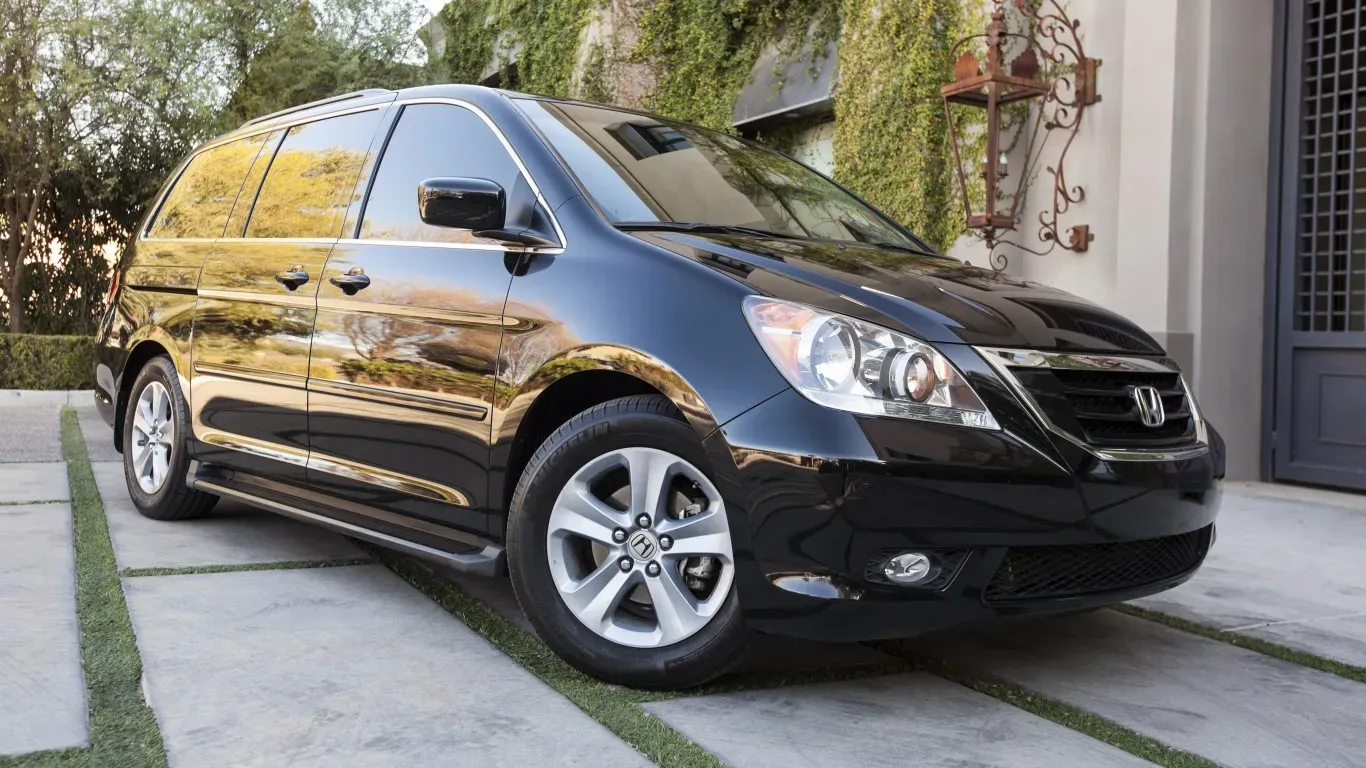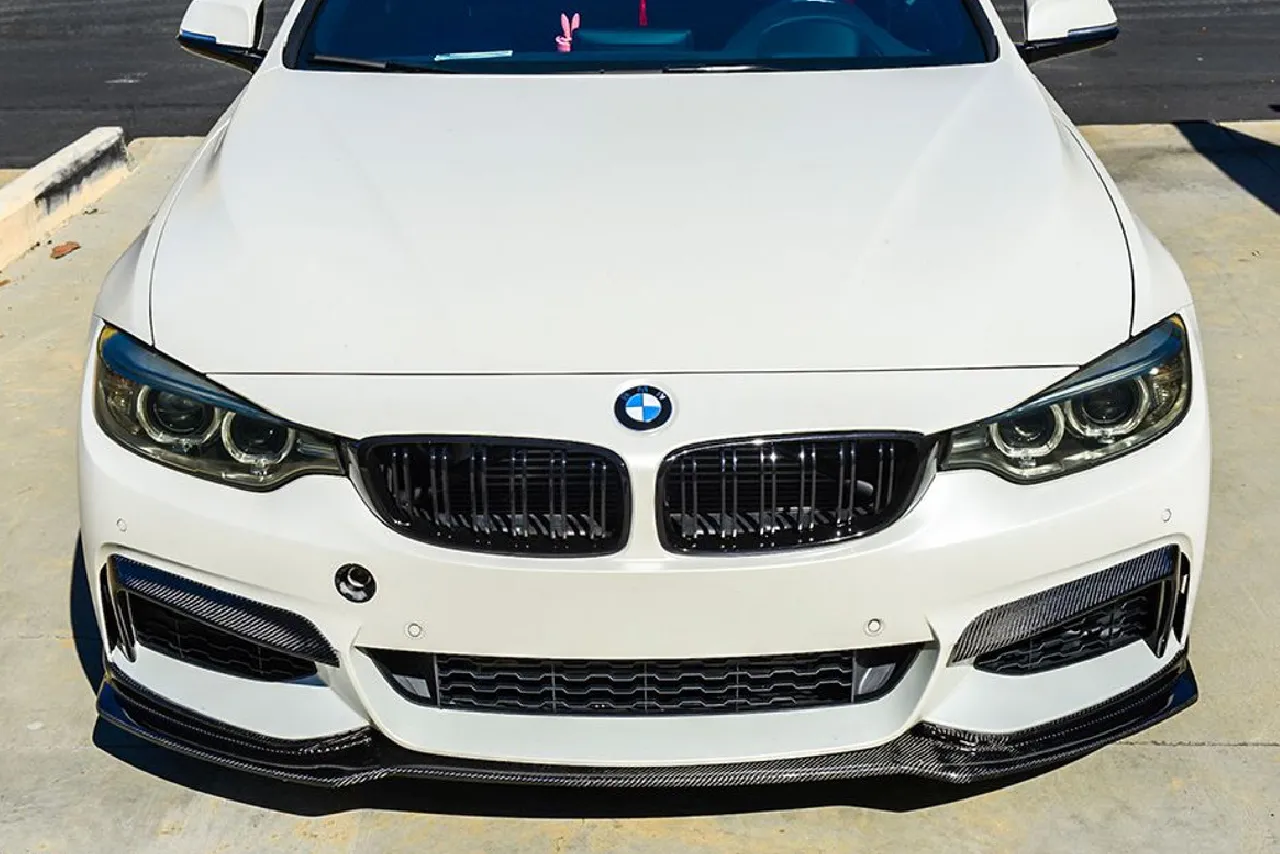SUVs have become a dominant force in the automotive world, with a variety of models designed to cater to different lifestyles and needs. Two vehicles that stand out in this crowded segment are the BMW X3 and the Chevrolet Suburban. When you see a photo of a BMW X3 and a Chevrolet Suburban together, the visual contrast is striking—one is a sleek, luxury compact SUV, while the other is a massive, full-size family hauler. In this article, we’ll explore the differences between these two SUVs, analyzing their features, performance, and who they are best suited for.
Key Comparisons Between BMW X3 and Chevrolet Suburban
| Feature | BMW X3 | Chevrolet Suburban |
|---|---|---|
| Vehicle Type | Compact Luxury SUV | Full-Size SUV |
| Engine Options | 2.0L 4-cylinder, 3.0L 6-cylinder | 5.3L V8, 6.2L V8 |
| Horsepower | 248-382 HP | 355-420 HP |
| Towing Capacity | 4,400 lbs | 8,300 lbs |
| Seating Capacity | 5 passengers | 7-9 passengers |
| Cargo Space | 62.7 cubic feet | 144.7 cubic feet |
| Fuel Efficiency (City) | 25 MPG | 15 MPG |
| Fuel Efficiency (Highway) | 29 MPG | 20 MPG |
| Starting Price | $43,000 | $54,000 |
| Infotainment System | 10.25-inch display | 10.2-inch display |
Overview of the BMW X3
The BMW X3 has long been recognized as a leader in the luxury compact SUV category. Its agile handling, sophisticated design, and powerful engine options make it a top choice for city dwellers who need the convenience of an SUV but still want a premium driving experience. The X3 is powered by a range of engines, starting with a 2.0-liter 4-cylinder that delivers 248 horsepower, up to a 3.0-liter 6-cylinder that produces 382 horsepower for the M40i model. In terms of fuel efficiency, the X3 outperforms many in its class, with up to 29 miles per gallon on the highway. Its compact size and nimble handling make it ideal for urban environments where parking and maneuverability are crucial.
Overview of the Chevrolet Suburban
On the other hand, the Chevrolet Suburban is the epitome of a full-size SUV, designed for families who need space, power, and utility. Known for its massive frame, the Suburban can comfortably seat up to nine passengers, with ample room left for cargo. It’s powered by a robust lineup of V8 engines, including a 5.3-liter V8 that generates 355 horsepower, and an optional 6.2-liter V8 with 420 horsepower, making it perfect for towing and long-distance travel. The Suburban’s towing capacity of up to 8,300 pounds makes it a workhorse for those who need to haul trailers or boats. While it’s not as fuel-efficient as the X3, it provides unmatched utility for large families or those who frequently take road trips.
Comparing Size and Dimensions
When you look at a photo of a BMW X3 and a Chevrolet Suburban together, the size difference is immediately noticeable. The BMW X3, as a compact SUV, is significantly smaller with dimensions of about 185 inches in length and a width of 74 inches. Meanwhile, the Chevrolet Suburban dwarfs the X3, measuring 225 inches in length and 81 inches in width. The Suburban’s larger size provides significantly more interior space, especially in the third-row seating and cargo area. For city driving, the BMW X3’s smaller size makes it easier to park and navigate through traffic, while the Suburban’s bulk is better suited for open roads and rural settings where space isn’t a concern.
Performance and Engine Specifications
When comparing the performance of these two vehicles, it’s clear that each serves a different purpose. The BMW X3 offers a more refined driving experience with responsive steering and sharp handling, making it fun to drive on both highways and city streets. Its engines, while powerful, are also designed to be efficient, especially the 4-cylinder version that balances power with economy. On the other hand, the Chevrolet Suburban is all about power and capability. With its V8 engines, it can handle heavy towing and off-road conditions. However, the trade-off for this power is lower fuel efficiency, with the Suburban delivering only around 15 miles per gallon in the city. Ultimately, the X3 is better for performance-focused drivers, while the Suburban excels in heavy-duty tasks.
Interior Features and Comfort
Both the BMW X3 and Chevrolet Suburban offer luxurious interiors, but they cater to different audiences. The BMW X3, being a luxury compact SUV, boasts premium materials, a high-tech dashboard, and features such as heated seats, a panoramic sunroof, and a 10.25-inch infotainment display with Apple CarPlay and Android Auto. It’s designed to provide comfort and convenience for five passengers. The Chevrolet Suburban, in contrast, is built for larger families or groups, with seating for up to nine passengers. It offers an expansive interior with multiple USB ports, a large cargo space of 144.7 cubic feet, and advanced safety features such as forward-collision warning and lane-keeping assistance. While the X3 emphasizes a luxury driving experience, the Suburban prioritizes practicality and space.
Fuel Efficiency: BMW X3 vs Chevrolet Suburban
Fuel efficiency is a crucial factor when comparing the BMW X3 and the Chevrolet Suburban, as it impacts both running costs and environmental footprint. The BMW X3, with its compact design and efficient engine options, delivers impressive fuel economy—up to 25 MPG in the city and 29 MPG on highways. This makes the X3 an excellent choice for daily commuters and city dwellers looking to save on fuel costs while still enjoying a premium SUV experience.
On the other hand, the Chevrolet Suburban focuses more on power and utility, which comes at the expense of fuel efficiency. With its larger V8 engines and heavy-duty capabilities, the Suburban provides around 15 MPG in the city and 20 MPG on highways. While its fuel consumption is higher, the Suburban’s capacity to handle long-distance family trips and towing tasks justifies the difference for those who prioritize power and space over fuel economy.
Safety Features: A Focus on Protection
When it comes to safety, both the BMW X3 and the Chevrolet Suburban are packed with advanced features, but each is tailored to different driving environments. The BMW X3 comes equipped with a suite of high-tech safety features, including forward collision warning, lane departure warning, and blind-spot detection. Additionally, it offers parking sensors and an automated emergency braking system, making city and highway driving safer.
The Chevrolet Suburban, being a larger vehicle, also integrates a robust array of safety features, focusing on both driver and passenger protection. The Suburban offers features such as rear cross-traffic alert, lane-keeping assistance, and trailer sway control, which is particularly useful for those towing heavy loads. Both vehicles rank high in safety, but the Suburban’s features are more focused on long-haul driving and towing safety, whereas the X3 is ideal for urban safety concerns.
Technology and Infotainment Systems
In the realm of technology, both SUVs are well-equipped with modern infotainment systems, but they cater to slightly different user preferences. The BMW X3 offers a highly intuitive 10.25-inch touchscreen infotainment system that comes standard with Apple CarPlay and Android Auto. Additionally, the X3 offers a digital driver’s display and optional features such as gesture control and a head-up display for a more connected driving experience.
The Chevrolet Suburban also provides a top-tier infotainment system with a 10.2-inch touchscreen that supports Apple CarPlay, Android Auto, and a Wi-Fi hotspot. However, the Suburban’s infotainment setup is designed to cater to a larger family with its multiple USB ports, rear-seat entertainment system, and larger storage capacity for long trips. For families seeking extensive connectivity on the go, the Suburban’s tech offering may be more appealing, while the BMW X3 delivers luxury and precision in a more compact package.
Maintenance and Ownership Costs
One often overlooked aspect when purchasing a vehicle is the maintenance and ownership costs associated with the SUV. The BMW X3, being a premium compact SUV, tends to have lower annual maintenance costs compared to larger, more complex vehicles. Its high fuel efficiency, paired with BMW’s solid warranty program, ensures that owners spend less on routine services and repairs over time.
In contrast, the Chevrolet Suburban, due to its size, heavier engine components, and higher fuel consumption, has slightly higher maintenance costs. Additionally, larger tires, more frequent oil changes, and higher brake wear contribute to increased upkeep costs. However, for families or individuals who need the additional space and towing capacity, the higher ownership cost of the Suburban may be justified by the added utility and durability.
Resale Value: Long-Term Investment
Both the BMW X3 and the Chevrolet Suburban maintain strong resale values, but for different reasons. The BMW X3 benefits from its status as a luxury vehicle, with a steady demand for premium compact SUVs in the second-hand market. Buyers are often attracted to BMW’s reputation for performance and luxury, which helps retain the vehicle’s value over time.
On the other hand, the Chevrolet Suburban is highly sought after for its durability and family-friendly design. Full-size SUVs that offer both seating capacity and towing capabilities are in high demand, especially among buyers looking for long-lasting, versatile vehicles. This strong demand keeps the Suburban’s resale value competitive, especially for models that have been well-maintained.
Which One Should You Choose?
Choosing between the BMW X3 and the Chevrolet Suburban comes down to your specific needs and preferences. The BMW X3 is perfect for individuals or small families who want a compact, luxurious SUV with excellent fuel efficiency, cutting-edge technology, and urban maneuverability. It’s ideal for those who prioritize a premium driving experience and lower operating costs.
On the other hand, the Chevrolet Suburban is best suited for large families or individuals who need extra space, powerful towing capabilities, and a vehicle built for long road trips. Its higher capacity for passengers and cargo, coupled with robust V8 engine options, make it the go-to choice for people who require a heavy-duty SUV for family vacations or towing.
Conclusion
In summary, the photo of a BMW X3 and a Chevrolet Suburban together highlights the major differences between these two SUVs. The BMW X3 is perfect for those who want a luxury compact SUV with a focus on performance, fuel efficiency, and urban maneuverability. In contrast, the Chevrolet Suburban is the ideal vehicle for families or individuals needing maximum space, power, and towing capacity. Whether you’re looking for a refined, compact SUV or a powerful, full-size vehicle, the choice between the X3 and Suburban ultimately depends on your lifestyle and needs.
FAQs
What are the key differences between the BMW X3 and Chevrolet Suburban?
The BMW X3 is a luxury compact SUV known for its sleek design, fuel efficiency, and advanced technology, ideal for city driving. The Chevrolet Suburban, on the other hand, is a full-size SUV that offers more space, towing capacity, and is better suited for large families and long road trips.
Which vehicle is more fuel-efficient, the BMW X3 or Chevrolet Suburban?
The BMW X3 is more fuel-efficient, offering up to 29 MPG on highways compared to the Chevrolet Suburban, which provides around 20 MPG on highways. The X3 is ideal for drivers looking to save on fuel costs.
Is the BMW X3 or Chevrolet Suburban better for family trips?
The Chevrolet Suburban is better suited for family trips due to its larger seating capacity, more cargo space, and stronger towing capabilities. The BMW X3 is a great choice for smaller families or those prioritizing a luxurious driving experience.
I’m Waqas, an electric vehicle enthusiast and tech writer with over 6 years of experience covering the EV industry. I write in-depth articles, comparisons, and reviews to help readers understand the fast-evolving world of electric mobility. From battery technology to EV launches and charging trends, I aim to make complex EV topics simple, engaging, and informative for everyday drivers and curious readers alike.





